When President Trump declared a national emergency in mid-March and placed the Federal Emergency Management Agency, FEMA, in charge of the response to the novel coronavirus pandemic COVID-19, Jeffrey Byard was at home in Arlington, Virginia. But for a quirk of fate and politics, he might have been at the White House assuming a central role in the crisis.
As FEMA’s then Associate Administrator for the Office of Response and Recovery, Byard had been the top executive managing the nation’s disaster response, recovery and field operations during the eventful hurricane seasons of 2017 and 2018. In February 2019, Trump nominated him to head the agency, but the nomination was withdrawn in September after a senator objected. Byard, 47, announced his retirement from federal service in late December and left FEMA at the end of January, just as the first coronavirus cases were being confirmed in the United States.
So, instead of standing behind the President as he signed the emergency declaration on March 13, Byard was still acclimating to his new position as Vice President of Government Relations and Emergency Management of Team Rubicon, and pondering what role the veteran-led disaster relief organization might play in the national efforts against, and in response to, the coronavirus. What he did know was that his experience at FEMA could help shape that response.
Untangling Disaster Relief From Its Jargon
Even before going to Washington, Byard already had 16 years of experience in emergency response, and had risen to become the top career official in the Alabama Emergency Management Agency. In 2017, when the new president tapped AEMA’s administrator, Brock Long, to head FEMA, Long had turned to Byard and asked, “Are you up for a challenge?”

Byard joined FEMA in September 2017, just days after Hurricane Harvey struck Houston, and weeks before Irma hit Florida and Maria devastated Puerto Rico. The string of hurricanes stretched FEMA’s and the government’s resources to the limit. As the associate administrator for response and recovery, Byard was on the hot seat. Before he could even settle into his new position, he found himself at the White House briefing the new president and his team—elected and appointed officials inexperienced in emergency response—about the crises and the government’s plans to offer assistance to communities devastated by the hurricanes.
The federal government’s emergency plan, known as the National Response Framework, is organized along 15 Emergency Support Functions—or ESFs—covering sectors such as transportation, oil and hazardous materials, search and rescue, firefighting and public works. It’s unwieldy, and like many government programs, it has its own jargon.
“I knew we couldn’t go to the White House and say, ‘We need ESF-5 to make sure we have ESF-13 to support our efforts in ESF-6, and we know we have impacts in ESF-8’,” Byard recalled. (That sentence, by the way, translates to: We need planning (ESF-5) to make sure we have safety and security (ESF-13) to support our food, water and sheltering (ESF-6) efforts, and we know we have impacts with health and medical services (ESF-8).)
“They didn’t have time to learn our language. We had to start speaking, you know, English!”
The 7 Community Lifelines Are Born
Those first few months of Byard’s FEMA tenure were hectic. “It was nonstop,” he says. “We did some good things just helping millions of Americans. But in the middle of the responses and recovery we realized we needed to do business differently.” And so, the “lifeline” concept of operations was born.
Those seven community lifelines are the fundamental services any, and every, community depends upon: security and safety; food, water and shelter; the health and medical system; power and gas; communications; transportation; and hazardous materials. Disasters, explains Byard, are all local. If even one lifeline is out it requires action be taken.
“The benefit of the lifelines concept is the simplicity,” he explains. “You look at how a mayor would look at his or her city: There are about seven areas of any city that are crucial for that community to function. If one of them is disrupted, there’s a call to action at that level.”

By defining and focusing on those seven community lifelines, disaster response became simpler to plan for, and simpler to communicate about.
The lifelines help leaders answer the three questions that Byard says are key to any disaster response: ‘what?,’ ‘so what?,’ and ‘now what?’ “The ‘what’ is what happened; the ‘so-what’ is the effect—is there a workaround, are there additional disruptions or impacts we need to work around? And the ‘now-what’ is what are we going to do about it.”
In addition to naming the lifelines, Byard and team also developed a very simple color matrix, based on red, yellow and green. When a lifeline is red, it’s unstable; services are disrupted and no solution has been identified or is in progress. Yellow lifelines are stabilizing; green are stable. “If a lifeline is red, we know where we are going to focus our resources. Senior leaders can see through those seven lifelines to where the issues are and how to attack them,” he explains.
Building a Coalition of the Willing
To persuade other officials and agencies outside of FEMA to integrate the lifelines concept into the National Response Framework, Byard applied his Southern charm, serving as the idea guy to build a coalition of the willing. In the end, it took more than a year to develop and implement the lifelines concept, but it was set in doctrine in the fall of 2019, just before Byard left FEMA, when a revised NRF was signed by President Trump.
By March, Byard, a former Marine, would begin applying those lifelines at Team Rubicon.

“One of my objectives was to open an office in Washington to help build Team Rubicon’s ties with the government,” he says. Instead, he and his wife, Sara, are working from home, adjusting to telework and a crowd, with four daughters, ranging in age from 10 to 18, home from school amid stay-at-home orders. But from his makeshift home office, Byard is helping coordinate the organization’s efforts to assist the nation’s fight against the coronavirus. Team Rubicon has already deployed response teams to Washington state, Texas, Florida, New York, California, the Navajo Nation in Arizona, and more.
“We’re partnering with food banks to help with packaging and delivery. And we’re active in health and medical, too, managing and operating medical stations and supporting community coronavirus testing centers.”
And yes, he was referring to the two community lifelines of food, water and shelter—areas where Team Rubicon has long done most of its work in the past—and health and medical, an emerging area of focus for the organization.
Adopting the Lifelines While Responding to the Coronavirus Pandemic
With Byard on board, Team Rubicon itself began adopting the lifeline model, right in the heart of the coronavirus outbreak. By transitioning away from institutional speak—by moving away from talking about supporting a community’s EFS-6, and or helping with its EFS-8 needs—and toward the common-language lifelines, like offering assistance with food, shelter and water after a tornado, or providing health and medical relief on the Navajo Nation during the coronavirus pandemic, Team Rubicon has been better able to communicate the kind of tangible assistance it can provide during any natural disaster or humanitarian crisis.
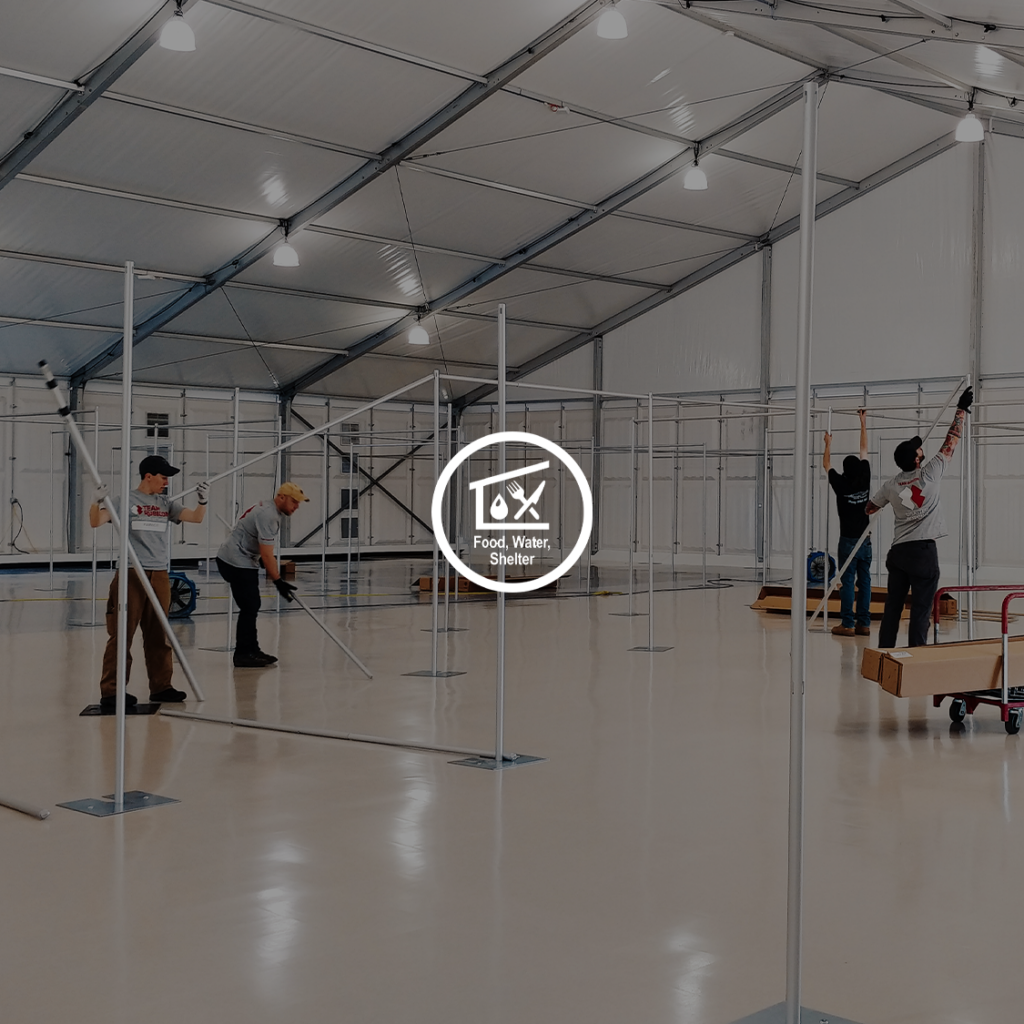
As a result of aligning all of its operations around the seven lifelines, Team Rubicon has also been able to be less reactive and more proactive. Instead of waiting for communities to request assistance, Team Rubicon has been able to offer it, often before the need is even obvious, like letting communities with low hospital bed counts know that when the time comes, it stands ready to help deliver some of the health and medical support their community might need.
“We are actively making the transition in terminology to incorporate the community lifelines into how we speak about our work,” Byard says. “We want to be industry leaders in the non-profit world. So, we are speaking the same language.”
The 7 Community Lifelines of Emergency Response
When evaluating natural disasters and humanitarian crises, identifying disruptions in these seven community lifelines helps relief organizations determine where, and how to, respond. During the coronavirus outbreak and beyond, Team Rubicon is equipped to offer support in each of the seven community lifelines:
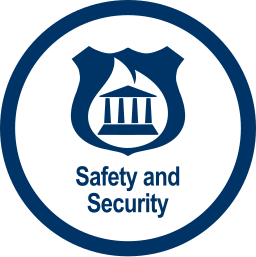 Safety and Security
Safety and Security
- Law Enforcement/Security
- Fire Service
- Search & Rescue
- Government Service
- Community Safety
Team Rubicon’s safety and security capabilities include:
- Search and rescue
- Provide sawyer/chainsaw, core ops, heavy equipment, and debris management operations
- EOC services, including Incident Command and Management Support and Logistics Support
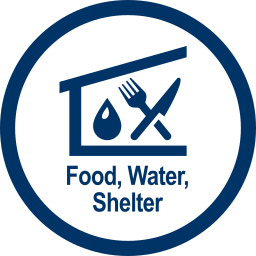 Food, Water, Shelter
Food, Water, Shelter
- Food
- Water
- Shelter
- Agriculture
Team Rubicon’s water, shelter capabilities include:
- Manage food distribution sites, assist with food distribution, support and assist with food bank operations
- Build isolation shelters and alternative care sites; provide Incident Command Support for isolation shelters/alternative care sites; provide logistics support for isolation shelters/alternative care sites; provide staff support at homeless shelters
Health and Medical
- Medical Care
- Public Health
- Patient Movement
- Medical Supply Chain
- Fatality Management
Team Rubicon’s health and medical capabilities include:
- Drive-Up Testing: Setup site, manage traffic, interact with patients and conduct testing
- Provide direct patient care and fill gaps in staffing at medical centers
- Medical Facilities Support & Management: Provide Incident Command support for hospitals and medical center; stand up and staff field medical sites and large isolation/quarantine facilities; support the expansion of medical facilities
- Support ambulance services with EMTs, drivers, and more
Communications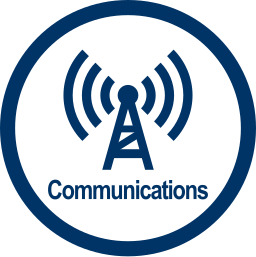
- Infrastructure
- Responder Communications
- Alerts, Warnings, and Messages
- Finance
- 911 and Dispatch
Team Rubicon communications capabilities include:
- 211 support services
- Mentoring in ICS and command and general staff
Transportation
- Highway/Roadway/Motor Vehicle
- Railway
- Maritime
- Aviation
- Mass Transit
Team Rubicon’s transportation capabilities include:
- Last-mile delivery of supplies and meals to those in isolation
- Escort formerly quarantined individuals to their homes
- Ambulance service support with EMTs, drivers, and more
- Coordinate traffic at medical centers and mobile testing sites
- Support medical supply logistics, including packaging and distributing PPE
- Provide select inventory management and transportation of supplies to and from state-run COVID-19 facilities
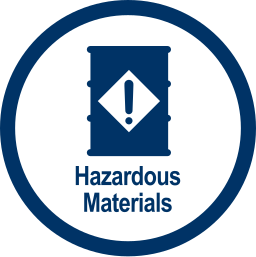 Hazardous Materials
Hazardous Materials
- Facilities
- HAZMAT, Pollutants, Contaminants
Energy (Power & Fuel)
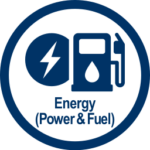 Power Grid
Power Grid- Fuel




